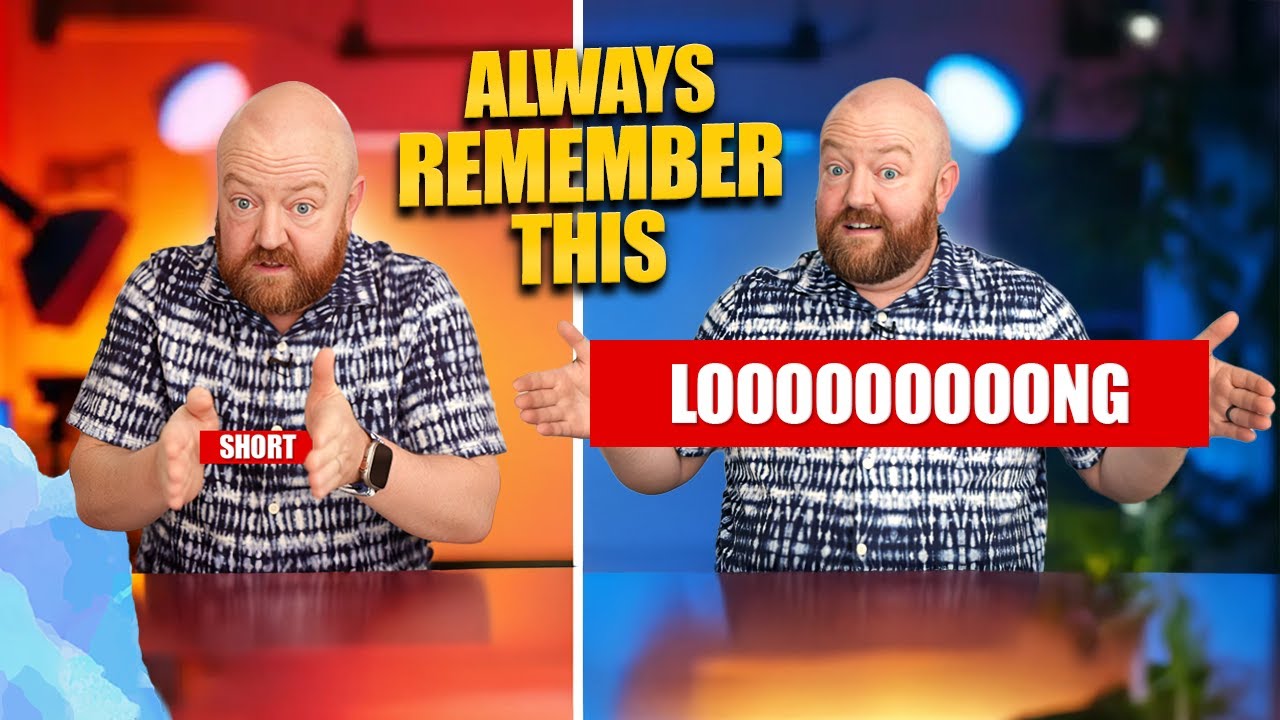There’s a lot of confusion right now around video length, thanks to TikTok and YouTube Shorts. But how long should a YouTube video be today?
In this post, we’ll break down the ideal video length, when to use Shorts vs. long-form videos, the pros and cons of each, and what type of content works best in each format. Plus, I’ll share the surprising results from a recent Shorts experiment we ran across multiple channels.
Start With Your Channel Goal
Before you decide on length, ask yourself: What’s the goal of this video?
- Are you trying to get views?
- Are you focused on ad revenue?
- Are you hoping to generate leads for your business?
- Are you trying to educate, entertain, or build a relationship with your audience?
These answers will shape everything about your video—including its length.
Both views and watch time matter, but if your goal is to build trust or drive leads, longer videos tend to win.
Longer Videos Are Trending (And They Work)
In the past few years, as YouTube has separated Shorts from regular videos in its analytics, long-form content has gained momentum.
Take MrBeast, for example. His average video length today is nearly double what it was three years ago.
Other channels—like Nate and Kara or Outdoor Boys—used to split content into series. Now they bundle it into one longer video, and they’re seeing better results.
Why? Because longer content gives viewers more time to connect with you and your message.
Why Creators Use Shorts
Shorts definitely have their place. They’re great for:
- Entertaining in a short burst
- Quick creative bursts where high production value fits a small window
- Getting fast views, since Shorts are easier to consume and often favored by the algorithm
Shorts are also easier to create and can rack up views quickly. And yes—YouTube now allows ad revenue on Shorts.
But Shorts Come With Problems
Here’s where it gets tricky.
- Watch time suffers. Shorts are too short to build meaningful time with your viewers.
- Relationships aren’t built. Long videos help people trust you—like a referral. Shorts don’t offer enough space for that.
- Leads rarely follow. Shorts simply don’t drive leads the way long-form videos do.
Our Shorts Experiment: The Data
Last year, YouTube introduced a feature where each Short included a link to a related video.
So we ran an experiment: over 3 months, across several channels, we posted Shorts that linked to longer videos.
The result? Across the board, we saw only a 0.1% increase in views on the linked long-form videos.
Compare that to end-screen CTAs at the end of long-form videos, which convert closer to 1%. Still small, but 10 times better than Shorts.
Bottom Line: Shorts Don’t Drive Leads
If your goal is lead generation, Shorts just don’t perform.
That’s why I focus so heavily on creating the kind of long-form video that builds trust and turns casual viewers into warm leads—even if you don’t get massive views.
Want to know what kinds of videos work best for lead generation? I made a full video breaking that down: How to Generate Leads from YouTube.




